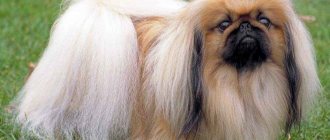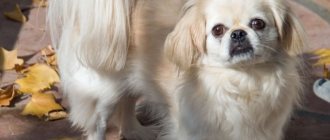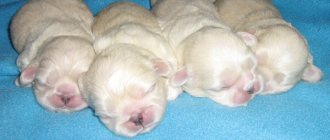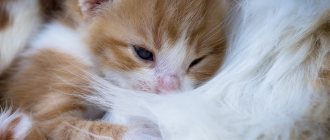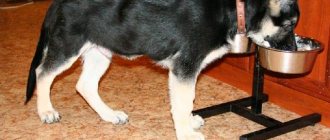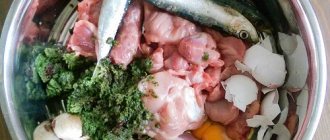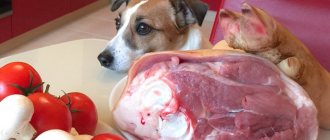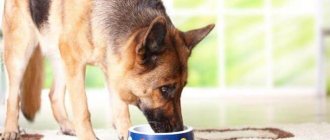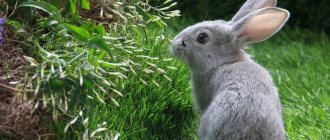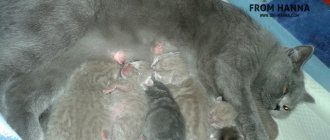A balanced diet is the basis for the proper development of any dog. It is important for owners to know what will be preferable: industrial dry food or natural food prepared from fresh ingredients. Let's consider what to feed the Pekingese. After all, this breed has its own developmental and physique characteristics that must be taken into account.
Features and rules of feeding Pekingese
The following tips will help you properly organize the nutrition of puppies and adult Pekingese:
- Food should be at room temperature to avoid negative effects on the digestive system.
- Feeding the Pekingese is carried out by the hour at regular intervals. Then the gastrointestinal tract will work smoothly.
- The dog is given a separate place for feeding. It is chosen once and does not change throughout life.
- Both puppies and adult Pekingese have no sense of proportion. Despite the fact that they have a small stomach, they are able to eat much more than normal. Therefore, the owner should control the amount of food consumed and avoid overfeeding.
- Due to the structure of the muzzle, it is inconvenient for animals to eat liquid food. They also have poorly developed fangs, which makes it difficult to chew dry food pellets and hard foods. It is recommended to soak the former in water, and cut the latter into small pieces.
- Clean water should always be within reach. It is updated 3-4 times a day.
- If the Pekingese is capricious and does not want to eat any product, the bowl is removed. After 20-30 minutes they take her out again. A hungry dog is unlikely to refuse food.
Royal Canin for healthy skin and coat 2 kg (for small breeds)
Famous French super-premium food. It is of good quality, but lower than that of competitors (discussed in paragraphs 1-9).
Royal Canin Mini contains grains and vegetable proteins.
pros
- Does not cause allergies;
- Nutritious, but does not cause excess weight in the animal (the energy intensity of the diet and the protein content in the product are precisely calculated);
- Available at many pet stores;
- High-quality packaging;
- Moderate size granules;
- Restoring the condition of the coat;
- Contains sodium polyphosphate, which prevents the formation of plaque;
- The composition includes many useful microelements;
- Improved digestion.
Minuses
- With constant feeding of this food, it is impossible to do without additional supplements with vitamins and microelements;
- Inconvenient packaging without fastener;
- Contains poorly digestible grains and artificial additives (preservatives, dyes.);
Among these foods, the best choices for a miniature animal would be 1st Choice Breeders Miniature Breed with Chicken (20kg) and Wolfsblut Gray Peak Small Breed (15kg).
The first is the highest quality, and at the same time inexpensive, super-premium food.
The second is a natural holistic company, and the company has a detailed official website with all the information on the food and instructions.
Both products have a minimum of disadvantages, which are offset by advantages from the balance of nutrients, vitamins, microelements and the absence of harmful preservatives to convenient packaging.
What type of food should I choose?
Veterinarians and dog handlers have still not come to a consensus on what is better to feed the Pekingese: ready-made food or natural food.
Each approach has both advantages and disadvantages. But if you take a responsible approach to preparing the diet, your pet’s health will not suffer in both cases.
Important. Mixing two types of food is prohibited. A sudden change in menu causes indigestion, which is dangerous to health.
Ready-made dog food
Dry food for Pekingese must contain:
- natural meat, not offal;
- cereals and vegetables;
- vitamin and mineral supplements.
This composition will fully satisfy the body's nutritional needs.
Pekingese can be fed super premium or holistic products for small long-haired breeds. When choosing, take into account the individual characteristics of the pet:
- weight;
- age;
- presence of illness or pregnancy.
There are hypoallergenic and medicinal lines designed for dogs with various diseases. They help normalize the functioning of internal organs, strengthen the immune system and correct weight.
Most owners feed adult animals with the following brands:
- Orijen;
- ProPlan;
- GoldenEagle;
- Bosch;
- Acana;
- Piccolo;
- GO! NATURAL Holistic;
- Grandorf.
It is allowed to alternate wet canned food and dry food. The former add variety to the daily menu and do not cause thirst, while the latter gently cleanse teeth of plaque.
Important. Pekingese are not suitable for food labeled “Active” and “Sport”. Because of them, sedentary dogs gain excess weight.
Natural products
The owner needs to make the natural diet varied. Otherwise, your pet will quickly get bored with the same food and begin to refuse food.
In addition, this way the dog will receive a maximum of useful substances, which will have a positive effect on its health and appearance.
What you are allowed to feed adult Pekingese at home:
- lean meat - beef, rabbit, chicken, turkey;
- offal - heart, tripe, chicken offal, kidneys, liver;
- sea fish - horse mackerel, mackerel, halibut, etc., except pollock;
- porridges – rice, buckwheat, millet, oatmeal;
- fermented milk products - kefir, cottage cheese, bifidok, yogurt without dyes and fillers;
- vegetables - fresh carrots and tomatoes, boiled zucchini, beets, cauliflower;
- greens - parsley, sprouted oats, lettuce;
- fruits - bananas, pears, nectarines, apples.
It should be noted that when switching to another type of nutrition, it is important to act gradually. For about 2 weeks, first replace ¼ portion, after 3-4 days 2/4, etc.
Ontario Mini Weight Control with Turkey and Potatoes (2.25 kg)
Czech super-premium product. Recommended by veterinarians due to its perfectly balanced composition. Does not contain cereals or grains. The composition includes high-quality fish, meat products, vegetables (for example, tomatoes).
There are no low-quality ingredients, chemical preservatives, or meat and bone meal. Suitable for dogs with excess weight problems.
pros
- High content of lycopenes;
- Suitable for dogs with poor health, problems with joints and immunity;
- Does not cause a bad odor from the animal's mouth;
- All useful microelements in the form of chelates are absorbed by the dog’s body 100%;
- Small granules that are easy to digest;
- Distributed in pet stores;
- Hermetically sealed packaging.
Minuses
- Pronounced smell.
What should you not feed your Pekingese?
Both a puppy and an adult Pekingese should not be fed the following foods:
- salted, fried, spicy, pickled dishes;
- freshwater fish;
- tubular bones;
- sweets and baked goods;
- semi-finished products;
- raisins, grapes, kiwi and citrus fruits;
- foods containing cocoa and caffeine;
- fatty meats, smoked meats and sausages;
- corn, legumes, potatoes, soybeans, white cabbage, semolina.
It is prohibited to encourage begging from the host's table. If you want to treat your Pekingese, you can give him a piece of dry food, meat or fruit.
Prohibited Products
There are foods that are strictly forbidden to give to Pekingese:
- tubular hollow bones;
- sugar, chocolate, sweet pastries
- salt, spices;
- smoked and fried foods;
- pork;
- potato;
- flour products;
- citrus fruits, grapes, raisins, avocados;
- hot or stale food.
It is also not advisable to give representatives of this breed fresh bread, pasta, bananas, onions and garlic. It is not necessary to exclude these foods completely. There must be moderation in everything.
How many times a day should I feed?
The number of meals depends on the age of the animal. As the puppy grows, they are fed less and less, gradually moving towards two meals a day.
Up to 1.5 months, food is given 6 times a day, even at night, because puppies can only eat a small portion at a time. Subsequently, the frequency is reduced:
- from 1.5 to 3 months – 5 times;
- from 3 to 6 months – 4 times;
- from 6 to 12 months – 3 times.
A one-year-old Pekingese is considered an adult. It is enough to feed him only in the morning and evening. If you don't walk or play with your dog much, it is acceptable to limit yourself to one meal.
The daily amount of food is calculated using the formula: 70 g of feed per 1 kg of weight.
For example, an adult Pekingese weighing 4 kg should be given 280 g of food per day.
However, each dog is individual, so the owner must monitor its condition. You should not allow yourself to gain excess weight, because this is fraught with problems with digestion, heart and blood vessels.
What vitamins are needed when feeding small breed dogs
If the dog’s diet consists of natural food, ready-made vitamin complexes will serve as an additional source of vitamins and minerals. There are many types of multivitamins and specialty vitamins on the pet market designed for small dog breeds.
The vitamin multicomplex solves the problem of vitamin deficiency in the body of an adult animal.
For example, Farmavit Active, Wolmar Winsome Pro Bio Booster Ca Mini or Galakan Champion. These nutritional supplements are developed for small breed dogs, are hypoallergenic, and do not cause side effects.
What to feed a Pekingese puppy?
Its proper development and health depend on what a dog eats in the first year of life.
An unbalanced diet for a puppy threatens growth retardation and the appearance of chronic pathologies.
Diet in the first month
For the first 4 weeks after birth, puppies are breastfed. Together with milk, they receive all the nutrients necessary for growth and antibodies that form immunity.
When there is not enough milk, puppies are fed special formulas. They are purchased from veterinary pharmacies and bred according to instructions.
For up to 12 days, bottles with a nipple are used for feeding, then the food is poured into a shallow saucer.
Important. Baby or kitten formulas are not suitable for puppies - they do not meet the needs of a dog's body.
Diet up to six months
Complementary foods are introduced at one month of age. Many breeders believe that it is better to feed babies with natural products. If necessary, the transition to dry food can be made when the pet becomes an adult.
A one-month-old puppy can eat:
- preferably goat's milk, but low-fat cow's milk is also suitable;
- chopped meat;
- meat broth.
If the baby is developmentally delayed, in consultation with the veterinarian, special supplements are purchased for malnourished puppies.
At 2 months, the pet is usually handed over to new owners.
To avoid health problems, you need to feed your Pekingese puppy in the usual way.
Gradually the diet is enriched:
- porridge;
- vegetable purees;
- fermented milk products.
At 2 months, a puppy eats about 180 g of food per day. It is divided into small parts so as not to stretch the stomach.
At 3 months, soft-boiled eggs are added. The portion is increased by 20-30 g.
From 4 months, the puppy is allowed to feed offal. The amount of kefir and cottage cheese is increased because teeth change begins, and the dog needs increased doses of calcium. Calcined supplements are administered on the veterinarian's recommendation.
By 6 months, the puppy is fed the same foods as an adult dog. However, he gets food more often because he continues to grow.
Diet from six months to a year
The puppy continues to be fed intensively to ensure proper development. It is advisable to exclude milk by this time, because adult Pekingese cease to absorb it. Instead, puppies are given fermented milk products.
The food remains high in calcium and protein for up to a year, because the skeleton and muscles are not yet formed.
When the puppy turns one year old, he begins to be fed in accordance with the norm for adult dogs.
Hygiene procedures
It is recommended to bathe a Pekingese puppy from 6 months of age and only if the dirt is too strong. If this is not the case, then it is better to manage with dry shampoo and combing.
But if your pet still needs to be bathed, then the following rules should be followed:
- The water for bathing should be approximately 38-39 degrees, and its amount should reach the puppy approximately to the knee, so as not to cause fear.
- The room should be warm and there should be no drafts.
- When bathing, it is advisable to use shampoo designed specifically for puppies of long-haired breeds.
- After bathing, the baby is wrapped in a soft towel, dried thoroughly, and then dried with a hairdryer.
- You cannot walk with your baby for 3 hours in the swimming area, and you should also protect him from drafts.
In addition to bathing, caring for Pekingese puppies includes:
- Weekly brushing of teeth using a specially designed dog brush and toothpaste.
- Inspect the ears daily for dirt and inflammation, as well as weekly cleaning with a dry cotton swab.
- Nails are trimmed once every 2-3 weeks using a special nail clipper.
- Hair combing is done daily using special brushes and combs.
Diet for adult dogs (one year and older)
The basis of an adult dog’s diet (about 50%) is meat products. Organ meats are less nutritious than whole meats. Therefore, their number should be increased by about a third.
Meat can be given raw if the owner is confident in its quality. Otherwise you need:
- scald it with boiling water;
- boil;
- freeze for 2-3 days to kill parasites.
An adult Pekingese is fed porridge with boiled fish fillet, which replaces meat, 2 times a week. River fish is not suitable because it contains many small bones. They can get stuck in the esophagus and injure the animal’s delicate gastrointestinal tract.
Adult Pekingese are not picky when it comes to cereals. However, they should not be fed instant cereals. It is important not to overcook the dish - the dog will most likely refuse food that resembles jelly in consistency.
Once a week, boiled yolk is added to the food of puppies and adult Pekingese. The egg can be anything:
- chicken;
- goose;
- quail;
- turkey.
It is better to avoid raw eggs - there is a high risk of infecting your pet with salmonellosis.
Adult Pekingese are given vegetables both boiled and raw. The optimal amount is 20% of the daily food volume.
Both puppies and adult Pekingese willingly eat a variety of fruits. They can be fed to your pets throughout the day or used as a reward for training.
For your information. If an adult Pekingese is fed normally, the spine and ribs can be clearly felt under the muscular corset. With a balanced diet, the coat is thick and shiny.
The table shows an indicative menu for an adult Pekingese for a week.
| Day | Feeding time | Products |
| 1 | Morning | Beef with vegetables |
| Evening | Boiled chicken, cottage cheese with fruit | |
| 2 | Morning | Fish porridge |
| Evening | Boiled liver with vegetables | |
| 3 | Morning | Meat porridge with egg yolk |
| Evening | Chicken with herbs and cottage cheese | |
| 4 | Morning | Boiled heart, porridge, kefir |
| Evening | Rice, beef pieces, vegetables | |
| 5 | Morning | Meat porridge with cottage cheese |
| Evening | Porridge with vegetables, cottage cheese with fruits | |
| 6 | Morning | Fish porridge |
| Evening | Meat porridge with vegetables | |
| 7 | Morning | Rice with turkey |
| Evening | Porridge with vegetables, cottage cheese |
Varieties
A lot of time has passed since the appearance of the breed, which may be why this species has undergone some changes. It is now generally accepted that Pekingese are divided into species. But this is far from true. In order to understand what we are talking about, you need to know a number of nuances.
Mini Pekingese
This is not a separate species, but only a simple variety. The fact is that dwarf dogs can appear in the litter of quite large individuals. It is believed that this is a culling. Such representatives are not allowed to attend exhibitions.
Some say that short stature can be determined only when the puppy is 8 months old. Other breeders claim that babies are born very small and in the process of growth significantly lag behind their brothers, although they have an excellent appetite and are very active.
By and large, this deviation is not something out of the ordinary. Having bought such a pet, you will appreciate its qualities:
- the little ones are very smart - they perfectly understand human gestures and are very friendly;
- The small stature of a domestic dog is more of a plus than a minus.
Purebred Pekingese
Some breeders proudly call their pets “royal” or “imperial”. They do this in order to sell puppies at a higher price. Real Pekingese were bred to communicate with emperors anyway. Therefore, purebred representatives look graceful.
And if we already touch on standards, then it should be noted that there are no varieties among Pekingese. It's just such a breed.
Japanese Chin
Some people confuse Pekingese and Japanese Chins. These breeds are very similar. They are similar in appearance to a lion. Previously they belonged to emperors, but not Chinese, but Japanese. Ordinary people were not even allowed to look towards the Chins. They were also revered and associated with religious customs.
The profile of this dog is snub-nosed, and the colors come in a variety of colors, but most often they are red, fawn, and shades close to these colors. This dog’s nose is black and is at the same level with the eyes, and the eyes seem to be outlined with a black pencil. The coat is long and silky. Weight is small - about 3 kg. The large head corresponds to the size of the body. The tail is thrown gracefully over the back. The fur falls beautifully down the back to the floor.
Crossbreeds
Now we need to talk about half-breeds. They appeared as a result of mating of different types of dogs with similar appearance. These representatives come in different colors. From red to black and white. And there are even short-haired and smooth-haired half-breeds. But we must remember that there can be no talk of any standards here. You need to forget about various exhibitions where the most purebred representatives are present, just like about pedigree breeding if you decide to get a hybrid dog.
The most popular crossbreed is the Pickapom (Pekingese-Spitz hybrid). Dogs are intelligent and playful. But they cannot stand loneliness. There is a cross between a Pekingese and a pug. A cute dog who has absorbed all the best from both breeds. When dog breeders tried to combine the Shih Tzu and Pekingese breeds, they hoped to influence the lengthening of the coat. The puppies have absorbed the best qualities. They practically do not shed and have an easy-going nature.
What to feed an older dog (old dogs)
Pekingese live on average 12-15 years. From the age of 8 the pet begins to age. At this age, adjustments should be made to his diet.
An aging dog is fed mostly soft food because its teeth become less strong. If the Pekingese is accustomed to dry food, buy products from lines for older animals.
Since the dog moves even less than usual, the caloric intake of the diet is reduced. The amount of cereals is kept to a minimum, replacing them with vegetables and meat. To maintain healthy bones and joints, include glucosamine and chondroitin supplements.
Important. For better absorption of food, the daily intake is divided into 4-5 small portions.
A veterinarian will give individual recommendations for feeding an aging Pekingese, taking into account the animal’s health condition.
If you have illnesses, a specialist will prescribe auxiliary supplements and help you choose a diet.
Orijen Original (6 kg)
Super premium product, suitable for all breeds, including small ones. Includes high-quality fish and meat, the content of which reaches a record 80% among other dry food, healthy herbs (dandelion, mint, turmeric).
All these ingredients help strengthen canine immunity. Does not contain third-rate by-products, chemical preservatives, flavor enhancers, aroma, vegetable proteins, gluten, or cereals. Orijen is suitable for active miniature dogs.
pros
- Record high animal protein content;
- Does not cause allergies;
- The composition contains several types of fish.
Minuses
- There is no fastener on the packaging so that the food does not dry out; it will have to be poured into a closed container;
- Strong odor and noticeable but short-lived odor from the animal's mouth;
- Rarely, problems with the gastrointestinal tract are possible.
What to feed your pet during pregnancy and after birth?
The diet of an adult Pekingese is changed from about 30 days, because until this moment the puppies do not develop as intensively.
From week 5, the daily rate is increased by approximately 15% every 7 days. The Pekingese is fed 3 times at first, and by the end of pregnancy - 4-5 times a day. Portions are made small so as not to overload the stomach, which is squeezed by puppies.
Pekingese are given more meat, vegetables and fruits. Together with the veterinarian, feed additives are selected.
For your information. If the Pekingese is fed dry food, then it is switched to products for pregnant dogs.
Nursing Pekingese also need more food, so they continue to be fed the same way as in the second half of pregnancy.
Immediately after birth, food is given about 7 times a day. It is crushed to a mushy consistency. Fresh vegetables are pre-boiled.
By the end of the first week, the frequency of feedings is reduced to 5 times a day, but the total volume of food is still approximately 1.5 times the norm.
When all the puppies are taken apart, the amount of food is adjusted to the usual amount.
Acana Heritage (6 kg) (for small breeds)
This Canadian product is a good choice for a miniature breed dog. It is suitable for both active animals and completely lazy ones. The food is holistic, that is, it contains only natural ingredients.
There are no cheap low-quality components in the products of this brand; feed wheat and bone meal are completely absent. Contains only meat, fish, vegetables, fruits, and high quality dairy products.
pros
- High concentration of animal proteins;
- Fresh ingredients;
- There are no carbohydrates (the dog’s body does not need them);
- A variety of fruits, vegetables, tonic herbs in the composition, which strengthen the heart and improve the condition of the gastrointestinal tract;
- Reduces insulin levels, strengthens the liver;
- High quality packaging.
Minuses
- May cause allergies;
- Noticeable fishy smell;
- High fat content.
Vitamins and mineral supplements for Pekingese
If Pekingese are fed natural products, they must be given vitamin and mineral complexes. Then both the adult dog and the puppy will receive all the elements necessary for health.
Supplements recommended for Pekingese:
- Unitabs ImmunoComplex – contains coenzyme Q10, normalizes metabolism, increases resistance to infections;
- WOLMARWinsomeProBioBoosterCaMini – multivitamin complex with calcium restores intestinal microflora and prevents disruptions in mineral metabolism;
- 8 in 1 ExcelMultiVitaminSmallBreed – indicated in the off-season for the prevention of vitamin deficiency in puppies and adult dogs, prevents problems associated with an inadequate diet.
Vitamin supplements are not used when feeding dry food, because all the necessary elements are already included in it.
How to toilet train?
Given the innate stubbornness of the Pekingese, babies should be toilet trained exclusively through interest and encouragement. In the beginning, you should use a diaper or tray with filler.
From the first days of your dog's stay in the house, you should show him the place where he needs to defecate. At the initial stage, you can use several diapers or trays and place them in those places where the puppy most often does his business. He should have a clear association with the litter box and emptying. After a while he himself will look for it.
The second stage is toilet training outside. You can do this from the very first walks. To do this, you need to walk with the baby until he goes to the toilet, and then praise him and treat him with a treat. The goal is to reinforce in the dog’s mind that defecating on the street is associated with positive emotions.
NOTE!
When training a Pekingese, you should not use a punishment system; these dogs simply will not understand this approach and the result will be the opposite.
Recommendations from experts
The following advice from veterinarians and dog handlers will help you properly feed puppies and adult Pekingese:
- During the first molt, when baby hair changes to adult hair, the menu is enriched with algae, mussels, oysters and other seafood. However, you need to remember that you cannot feed your Pekingese these foods at an earlier age.
- In summer, an adult Pekingese should eat more fiber, and in winter, protein foods.
- It is not recommended to rely heavily on buckwheat, because it can cause urolithiasis.
- The bowl is removed 20 minutes after the start of feeding. If there is food left in it, the portion size is reduced, and if the dog continues to lick the empty dishes, it is increased.
- You should not offer your pet treats often, because then he will refuse to eat regular food.
- Sedentary adult Pekingese dogs should consume about 300 calories per day. With moderate activity, the energy value increases to 400 calories, and with high loads - up to 600 calories.
If you feed your Pekingese correctly from childhood, he will have good health, which means he will live a long life. Therefore, the owner needs to take the most responsible approach to preparing a diet for a puppy and an adult dog.
